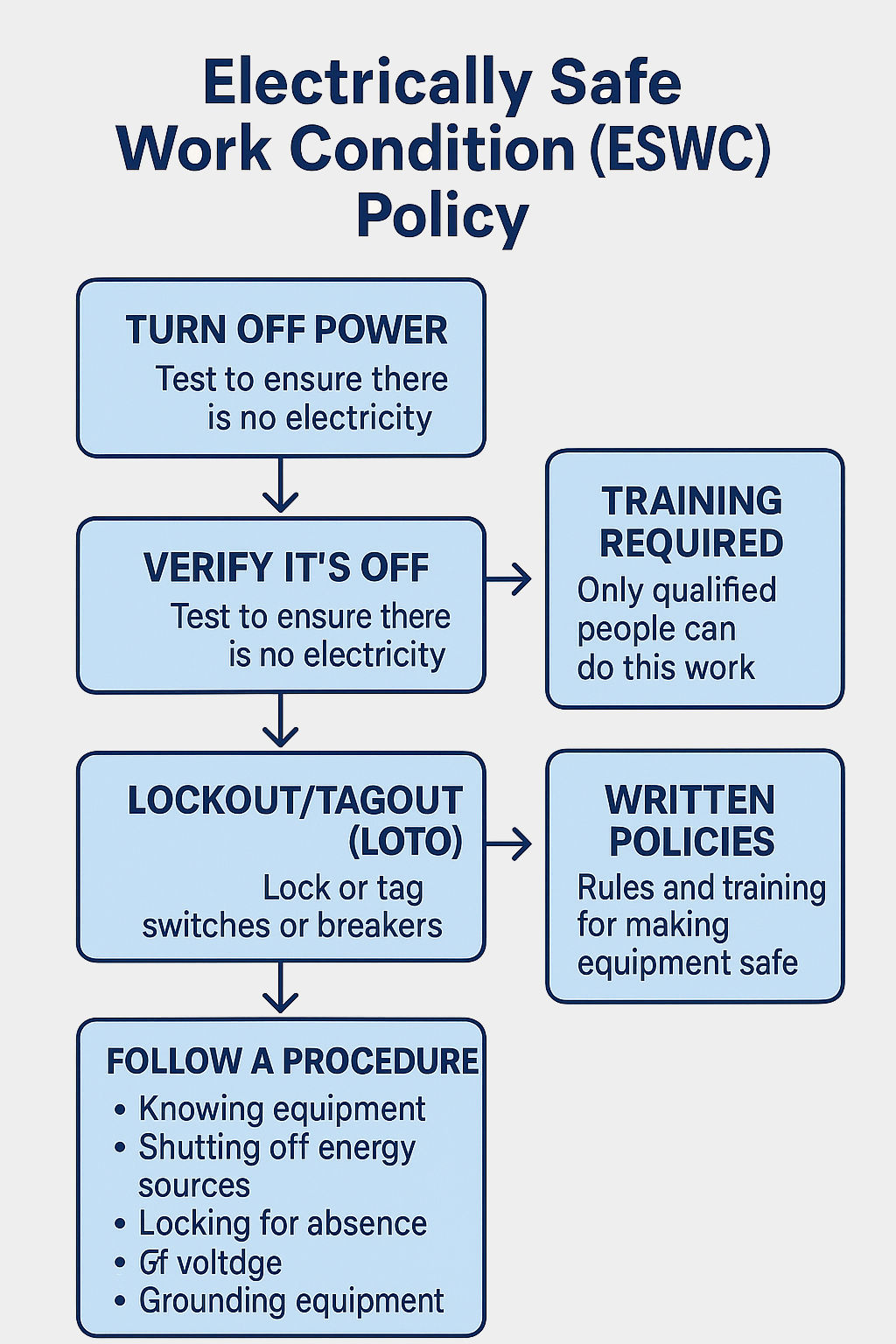Electrically Safe Work Condition (ESWC) Policy
The ESWC Policy is detailed in the National Fire Protection Associations about keeping workers safe when they work around electricity. It explains that before doing any electrical work, the system must be shut off and made safe to work on. This is called creating an Electrically Safe Work Condition.
Steps to Create an Electrically Safe Work Condition
- Turn off the power: Shut off the source of electricity using the proper switch or breaker.
- Lock it out and tag it out: Put a lock on the switch so no one can turn it back on. Add a tag that says who locked it and why.
- Test for voltage: Use a tester to make sure the electricity is really off.
- Release stored energy: Discharge any extra energy that may still be in the wires or machines.
When Can Work Be Done Without an ESWC?
Sometimes, workers must work with the power on. This can only happen if:
- Turning off the power is not possible: Like in hospitals or emergency systems.
- It’s necessary to test or troubleshoot: Only if trained and using the right safety gear.
The ESWC Policy saves lives by making sure power is off before work begins. It should always be followed unless there's a very good reason not to, and only trained people should handle those situations.
Knowledge Check Choose the best answer for the question.
2-12. What is the first step to create an Electrically Safe Work Condition (ESWC)?
You forgot to answer the question!

